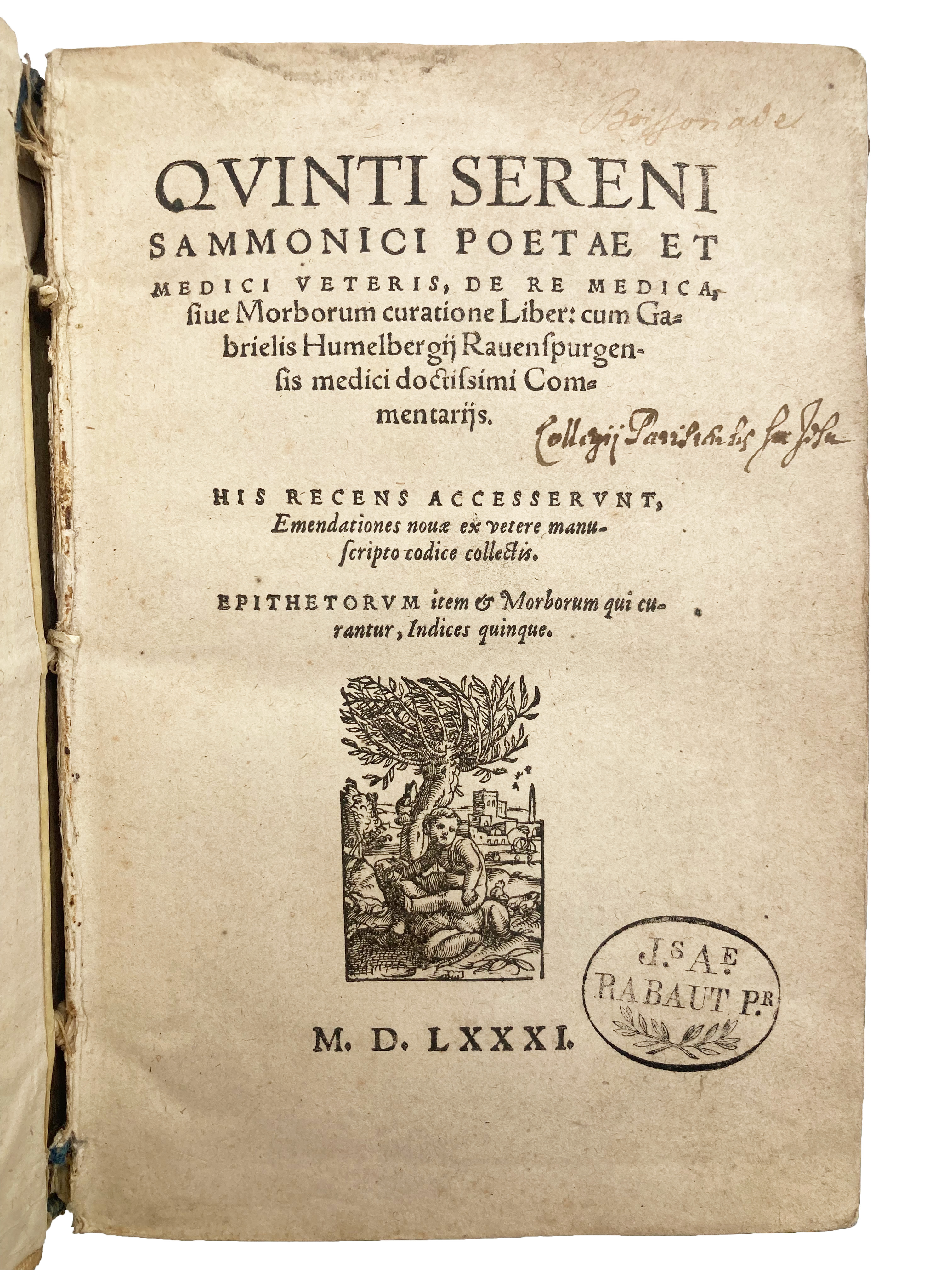SERENUS, Quintus Sammonicus.
INTERESTING MEDICAL PROVENANCE
De re medica, sive De Morborum curatione liber.
[Zurich, C. Froschauer], 1581.£2,450.00
4to. ff. [10], 249 [i.e., 252], last blank. Roman letter, little Italic. Woodcut printer’s device to title, decorated initials. T-p very slightly softened, light age yellowing. A very good, clean, unsophisticated copy in contemporary limp vellum, yapp edges, ms title to spine, minor loss and soiling at head of spine, early ms shelfmarks to front and rear pastedown, cont. ms ‘Boissonade’, C17 ‘Collegij Parisiensis Soc Jesu’, and C19 ink stamp ‘J.s A.e Rabaut P.r’ [Antoine Rabaut-Pommier] to title, same ink stamp to lower blank margin of one text leaf.
From the library of the politician and physician Antoine-Rabaut Pommier (1744-1820), member of the National Convention (1792–95) and of the Council of Ancients (1795–1801). He was exiled after the Restoration and later pardoned. In 1782, he founded a new hospital in Montpellier and devoted himself to his medical studies. He was a keen supporter of vaccination over variolation, which he studied during an epidemic in Montpellier c.1780, where he observed that labourers milking cows with pox scans appeared to be immune. Apparently, these observations were passed on to Edward Jenner by Dr Pugh – however, Pommier was not credited in Jenner’s pamphlet.
A very good, unsophisticated copy of this significant edition of a famous medico-astrological poem by Serenus (fl. 3rd century AD), tutor to Emperor Caracalla, previously printed by Froschauer in 1540, with the same title. The edition was ‘important because of the “ample and valuable” commentary by Humelberg, a Ravensberg physician. This extensive commentary constitutes a medical treatise in itself with a long section on the teeth and eyes and a chapter on mental diseases. This popular medical poem […] is based on Pliny and Dioscorides. […] It consists chiefly of a formulary for the poor and is divided into 65 chapters containing recipes against various disorders and maladies and is important for the history of the Greco-Roman period’ (Heirs of Hippocrates). It features popular medical treatments to common ailments, head to foot (e.g., worms, liver conditions, deafness, poisons, infertility, plague, etc.) with the help of astrological theories and even magic formulas including the famous ‘abracadabra’—its first recorded appearance in written form—used to treat semi-tertian fever. The detailed index lists the illnesses, symptoms, herbs, and animals mentioned in the poem and commentary, thus making it a very useful medical manual.
VD16 S 6000; Durling 4189 ff. (earlier eds); Heirs of Hippocrayes 44.5 (1540 ed.); Wellcome I, 5938ff. (earlier eds). Not in Osler.


